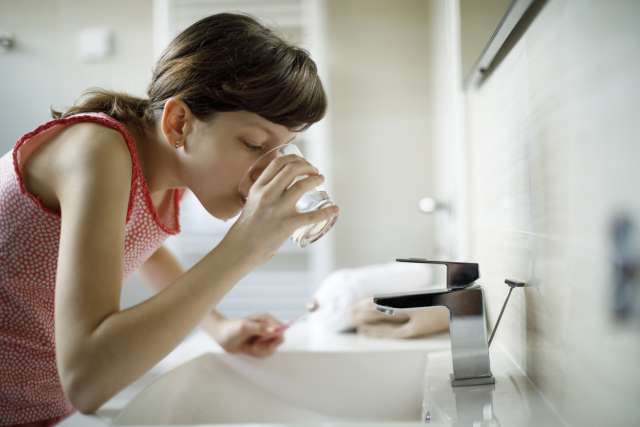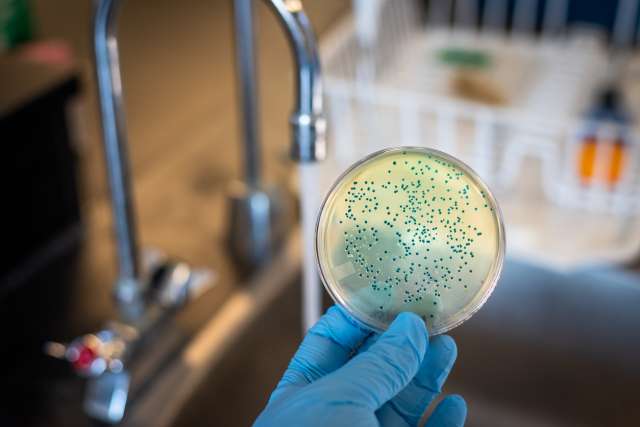When you think of possible contaminants in your drinking water it’s likely that bacteria and parasites like E. coli or giardia aren’t the first things to come to mind. However, both of these microorganisms are commonly found in drinking water and, among others, are monitored by the EPA through our National Primary Drink Water Regulations.
According to the book Waterborne Pathogens, Detection Methods and Applications, “waterborne pathogens can be divided into three main categories; viruses, bacteria, and parasites.” If untreated in our drinking water, these pathogens present health risks to the people and animals who consume them.
 So, here are the symptoms you need to look out for when it comes to the most common bacteria, viruses, and parasites found in drinking water, and what to do in the case of an outbreak in your area.
So, here are the symptoms you need to look out for when it comes to the most common bacteria, viruses, and parasites found in drinking water, and what to do in the case of an outbreak in your area.
Bacteria, Viruses & parasites DECODED
Coliform in Water
Coliform is a family of bacteria that naturally occurs in the digestive tracts of people and animals, and can be found in organic materials such as plants and soil. Coliform on the whole are not necessarily a dangerous group of bacteria, but fecal coliform, like E. coli, can cause serious illness.
People can become ill from E. coli by ingesting it through water or food that are contaminated with feces. Yeah, you read that right. Super gross. While this bacteria is too small to be seen by the naked eye, it is big enough to cause some serious health issues.
Escherichia Coli (E. coli)
They say that two’s a company, and three’s a crowd. But, according to the CDC, even if two people have confirmed cases of E. coli — that’s an outbreak!
Like other types of coliform, E. coli is a bacterium that lives in the digestive tracts of healthy people and animals. The CDC estimates that 83% of E. coli infections are food and waterborne in origin. It’s also typically found in the intestines of agricultural animals, it can come from contact with an infected animal, human waste, or contaminated raw fruits and veggies, and can get into your meat during processing if the meat is not cooked at exactly 160°F (71°C). Additionally, it can get in your water if it’s not properly treated at your local water treatment facility. Accidentally swallowing contaminated water in swimming pools, lakes, and rivers may also infect the human body.
For many, E. coli can be fought by your immune system without any sign of an infection. If symptoms are present, like diarrhea, stomach cramps, nausea, and vomiting, they typically show up 3-4 days after the initial infection. When E. coli makes a serious impact on your endocrine system or your kidneys, symptoms will vary from pale skin to fatigue, fever, bruising, and an inability to urinate.
parasites in water
Cyclospora Cayetanensis
This is a small parasite (composed of one cell) that can only be seen with a microscope, yet is big enough to cause an intestinal infection called Cyclosporiasis. It’s spread by ingesting food or water contaminated with feces. It takes one week for symptoms to show up, many of which include diarrhea, loss of appetite, weight loss, stomach cramps/pain, bloating, increased gas, nausea, and fatigue. Vomiting, body aches, headache, fever, and other flu-like symptoms are also possible. If not treated, the illness may last from a few days to a month or longer.
Giardia lamblia
Giardia lamblia is a microscopic parasite. It can be found in water, on soil or in food that has been contaminated with feces from other animals or humans who are infected with the parasite. When one becomes ill from consuming Giardia they contract a disease that is known as Giardiasis. According to the CDC, Giardiasis impacts the intestinal tract and causes symptoms like diarrhea, gas, upset stomach, abdominal cramps, dehydration and more. If you contact Giardiasis, there are many prescription drugs that can treat it, but it’s important to prevent the illness from the onset. The tricky thing about Giardia is it is resistant to chlorine and chloramines, which are commonly used by municipalities to remove bacteria and parasites from drinking water. Yikes!
The tricky thing about Giardia is it is resistant to chlorine and chloramines, which are commonly used by municipalities to remove bacteria and parasites from drinking water.”
Cryptosporidium
Similar to Giardia, Cryptosporidium is also a parasite that is contracted by (you guessed it) consuming food and water that has been contaminated with fecal matter. Common symptoms of being infected by Cryptosporidium include diarrhea, low-grade fevers, abdominal cramps, dehydration, weight loss, fatigue, upset stomach, vomiting, and more. This parasite is also known to be resistant to chlorination treatment method, which makes it a real pest to remove from drinking water. But fear not, there are a couple of proven ways to treat this nasty little parasite and the others discussed in this article.
removing bacteria and more from your drinking water
First things first — all of these microorganisms can be found in improperly-treated water. If you’re drinking water from your municipality, be sure to check your water quality reports and get to know the results. If you’re feeling uneasy about the amount of chlorine or chloramines used to treat the water, or your city has been recently impacted by a waterborne pathogen outbreak, consider looking into a UV water filter. Although our government and food facilities do all they can to provide us with the cleanest water possible, E. coli, Cyclospora, Giardia, and more will always find its way into our lives.
For those using well water, it’s important to always test your own well for different contaminants that might be present. It’s not uncommon to find these bacteria and parasites in well water thanks to things like agricul tural runoff, and the only real way to know is to test your water regularly.
tural runoff, and the only real way to know is to test your water regularly.
For a water filtration option to keep E. coli, Cyclospora and more at bay throughout your home, you can install a whole house water filter with a UV light. The Aquasana Rhino Whole House Well Water Filter is available with an optional UV filtration system that kills 99.99% of viruses, bacteria like E. coli, and chlorine-resistant cysts like Cryptosporidium and Giardia.
Powerful water filtration has also been proven to be effective against chlorine-resistant parasites like Cryptosporidium and Giardia. If you’re looking for a water filter that can tackle these specific contaminants, keep an eye out for systems that have been tested and certified to NSF standards 53 or 58 and rated for cyst reduction/removal, like our OptimH2O® Whole House Water Filter.
To ensure you’re addressing all of your contamination concerns, Aquasana provides easy-to-read performance data sheets for each of our water filtration systems, but you can always contact us if you have any questions!